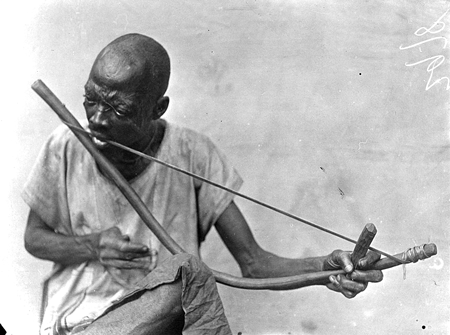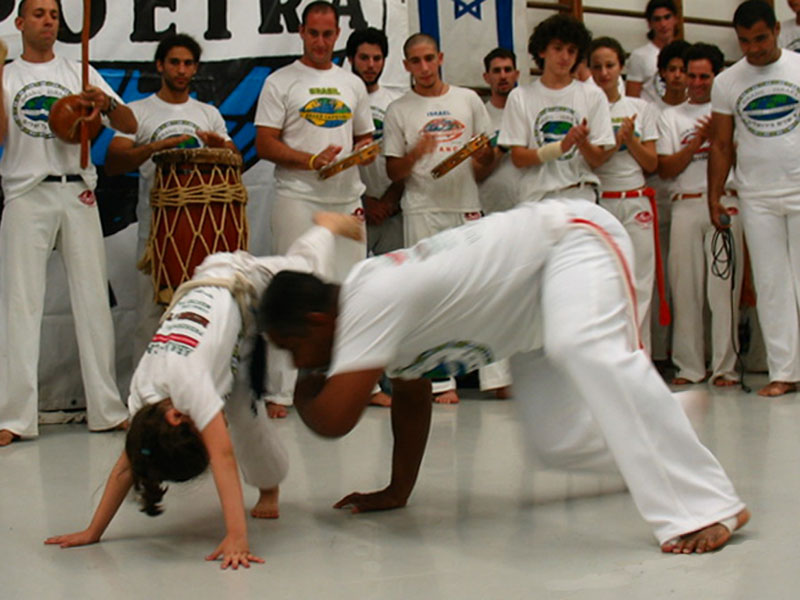|
Knocking And Kicking
Knocking and kicking (or ''yuna onse'') is a little-known traditional African-American dance-like martial art, arguably practiced clandestinely in parts of the Southern US and on the Sea Islands. Music and acrobatic movements made ''knocking and kicking'' inseparable from dance. Knocking and kicking was secretly performed within the black community. These performances were set to the beat of drums, clapping, or the accompaniment of reed pipes known as "quills." Some authors find that this art originates from engolo, and cognates with capoeira and danmyé. Name "Knocking" referred to a specific charging headbutt, mimicking African cattle, resulting in a distinct "knock" sound upon impact. Knocking was connected to kicking in name but often remained distinct. Masters of the kicking art also practiced the more widespread headbutting duels, but in the drum circles, kicks and acrobatics were the primary techniques. Origin Desch-Obi argues that ''Knocking and kicking'' is a com ... [...More Info...] [...Related Items...] OR: [Wikipedia] [Google] [Baidu] |
Kick
A kick is a physical strike using the leg, in unison usually with an area of the knee or lower using the foot, heel, tibia (shin), ball of the foot, blade of the foot, toes or knee (the latter is also known as a knee strike). This type of attack is used frequently by hooved animals as well as humans in the context of stand-up fighting. Kicks play a significant role in many forms of martial arts, such as capoeira, kalaripayattu, karate, kickboxing, kung fu, wing chun, MMA, Muay Thai, pankration, pradal serey, savate, sikaran, silat, taekwondo, vovinam, and Yaw-Yan. Kicks are a universal act of aggression among humans. Kicking is also prominent from its use in many sports, especially those called football. The best known of these sports is association football, also known as soccer. History The English verb to kick appears in the late 14th century, meaning "to strike out with the foot", possibly as a loan from the Old Norse "kikna", meaning "bend backwards, sink ... [...More Info...] [...Related Items...] OR: [Wikipedia] [Google] [Baidu] |
South Carolina
South Carolina ( ) is a U.S. state, state in the Southeastern United States, Southeastern region of the United States. It borders North Carolina to the north and northeast, the Atlantic Ocean to the southeast, and Georgia (U.S. state), Georgia to the west and south across the Savannah River. Along with North Carolina, it makes up the Carolinas region of the East Coast of the United States, East Coast. South Carolina is the List of U.S. states and territories by area, 11th-smallest and List of U.S. states and territories by population, 23rd-most populous U.S. state with a recorded population of 5,118,425 according to the 2020 United States census, 2020 census. In , its GDP was $213.45 billion. South Carolina is composed of List of counties in South Carolina, 46 counties. The capital is Columbia, South Carolina, Columbia with a population of 136,632 in 2020; while its List of municipalities in South Carolina, most populous city is Charleston, South Carolina, Charleston with ... [...More Info...] [...Related Items...] OR: [Wikipedia] [Google] [Baidu] |
Martial Arts In The United States
Marcus Valerius Martialis (known in English as Martial ; March, between 38 and 41 AD – between 102 and 104 AD) was a Roman and Celtiberian poet born in Bilbilis, Hispania (modern Spain) best known for his twelve books of ''Epigrams'', published in Ancient Rome, Rome between AD 86 and 103, during the reigns of the emperors Domitian, Nerva and Trajan. In these poems he satirises city life and the scandalous activities of his acquaintances, and romanticises his provincial upbringing. He wrote a total of 1,561 epigrams, of which 1,235 are in elegiac couplets. Martial has been called the greatest Latin epigrammatist, and is considered the creator of the modern epigram. He also coined the term plagiarism. Early life Knowledge of his origins and early life are derived almost entirely from his works, which can be more or less dated according to the well-known events to which they refer. In Book X of his ''Epigrams'', composed between 95 and 98, he mentions celebrating his fifty ... [...More Info...] [...Related Items...] OR: [Wikipedia] [Google] [Baidu] |
North American Martial Arts
North is one of the four compass points or cardinal directions. It is the opposite of south and is perpendicular to east and west. ''North'' is a noun, adjective, or adverb indicating direction or geography. Etymology The word ''north'' is related to the Old High German ''nord'', both descending from the Proto-Indo-European unit *''ner-'', meaning "left; below" as north is to left when facing the rising sun. Similarly, the other cardinal directions are also related to the sun's position. The Latin word ''borealis'' comes from the Greek ''boreas'' "north wind, north" which, according to Ovid, was personified as the wind-god Boreas, the father of Calais and Zetes. ''Septentrionalis'' is from ''septentriones'', "the seven plow oxen", a name of ''Ursa Major''. The Greek ἀρκτικός (''arktikós'') is named for the same constellation, and is the source of the English word ''Arctic''. Other languages have other derivations. For example, in Lezgian, ''kefer'' can mean bo ... [...More Info...] [...Related Items...] OR: [Wikipedia] [Google] [Baidu] |
Engolo
N'golo (anglicized as Engolo) is a traditional Bantu martial art and game from Angola, that combines elements of combat and dance, performed in a circle accompanied by music and singing. It is known as the forerunner of capoeira. Engolo has been played in Africa for centuries, specifically along the Cunene River in the Cunene Province of Angola. Ngolo finds its inspiration in nature, involving the imitation of animal behaviors. Examples include mimicking a zebra's kicking motion or emulating the swaying of trees. This warrior dance is not merely ritualistic; serious injuries have been known to occur during its practice. The combat style of engolo encompasses a variety of techniques, including different types of kicks, dodges, and takedowns, with a particular emphasis on inverted positions. Many of the iconic capoeira techniques, such as '' meia lua de compasso'', scorpion kick, '' chapa'', '' chapa de costas'', '' rasteira'', L-kick, and others, were originally developed wit ... [...More Info...] [...Related Items...] OR: [Wikipedia] [Google] [Baidu] |
Capoeira
Capoeira () is an Afro-Brazilian martial art and game that includes elements of dance, acrobatics, capoeira music, music, and spirituality. It likely originated from enslaved Mbundu people, of the Kingdom of Ndongo, in present-day Angola. The Mbundu of Ndongo had a formal military in which soldiers were professionally trained for combat. When Mbundu people were captured and sold into the Atlantic Slave Trade, they would have brought these fighting abilities with them to Brazil, where it developed into Capoeira. It is known for its acrobatic and complex manoeuvres, often involving hands on the ground and inverted kicks. It emphasizes flowing movements rather than fixed stances; the ''List of capoeira techniques#Ginga, ginga'', a rocking step, is usually the focal point of the technique. Though often said to be a martial art disguised as a dance, capoeira served not only as a form of self defense, but also as a way to maintain spirituality and culture. Capoeira has been practic ... [...More Info...] [...Related Items...] OR: [Wikipedia] [Google] [Baidu] |
Cabeçada
''Cabeçada'' (pronounced: ka-be-SA-da, lit. headbutt) is a headbutt in capoeira. It is a commonly used strike and one of the fundamental techniques in traditional capoeira. Although simple to execute, headbutt is one of the most dangerous moves, often causing fatalities. Headbutt was a deadly technique in 19th century capoeira carioca. In the contemporary capoeira game, violent headbutts are generally avoided. In capoeira, there are specific head butts, such as ''arpão de cabeça'' (head harpoon) and ''escorumelo''. History The sole major addition to capoeira, aside its engolo kicking core, was headbutting, a common African practice in the Americas, known as ''jogo de cabeçadas''. In the 19th century, headbutts were the capoeiras' primary technique, as per police records. Between 1822 and 1824, the German painter Johann Moritz Rugendas described capoeira as a headbutting game: In capoeira carioca, ''cabeçada'' was a deadly technique. An English visitor to Rio de Ja ... [...More Info...] [...Related Items...] OR: [Wikipedia] [Google] [Baidu] |
The Sabbath Among Slaves (detail)
''The'' is a grammatical article in English, denoting nouns that are already or about to be mentioned, under discussion, implied or otherwise presumed familiar to listeners, readers, or speakers. It is the definite article in English. ''The'' is the most frequently used word in the English language; studies and analyses of texts have found it to account for seven percent of all printed English-language words. It is derived from gendered articles in Old English which combined in Middle English and now has a single form used with nouns of any gender. The word can be used with both singular and plural nouns, and with a noun that starts with any letter. This is different from many other languages, which have different forms of the definite article for different genders or numbers. Pronunciation In most dialects, "the" is pronounced as (with the voiced dental fricative followed by a schwa) when followed by a consonant sound, and as (homophone of the archaic pronoun ''thee'' ... [...More Info...] [...Related Items...] OR: [Wikipedia] [Google] [Baidu] |
Sweep (martial Arts)
A sweep is either of two categories of martial arts techniques. From standing, sweeps are throws or takedowns that primarily use the legs to attack an opponent's legs. On the ground, sweeps are techniques for reversing a grappling position A grappling position refers to the positioning and holds of combatants engaged in grappling. Combatants are said to be in a neutral position if neither is in a more favourable position. If one party has a clear advantage such as in the ''mount'' ... from a guard position. Standing When standing it is a technique used to take an opponent to the ground by knocking their legs out from under them, so is classed as a throw or takedown. The force of the sweep either runs perpendicular to the opponent's leg or rises as it strikes the leg, lifting the foot from the ground. A sweep can be used to take the opponent to the ground or it can simply disrupt the opponent's balance long enough to make an opening for a punch or kick. In Japanese it is k ... [...More Info...] [...Related Items...] OR: [Wikipedia] [Google] [Baidu] |
A Negro Fight In Venezuela
A, or a, is the first letter and the first vowel letter of the Latin alphabet, used in the modern English alphabet, and others worldwide. Its name in English is '' a'' (pronounced ), plural ''aes''. It is similar in shape to the Ancient Greek letter alpha, from which it derives. The uppercase version consists of the two slanting sides of a triangle, crossed in the middle by a horizontal bar. The lowercase version is often written in one of two forms: the double-storey and single-storey . The latter is commonly used in handwriting and fonts based on it, especially fonts intended to be read by children, and is also found in italic type. In English, '' a'' is the indefinite article, with the alternative form ''an''. Name In English, the name of the letter is the ''long A'' sound, pronounced . Its name in most other languages matches the letter's pronunciation in open syllables. History The earliest known ancestor of A is ''aleph''—the first letter of the Phoenician ... [...More Info...] [...Related Items...] OR: [Wikipedia] [Google] [Baidu] |





